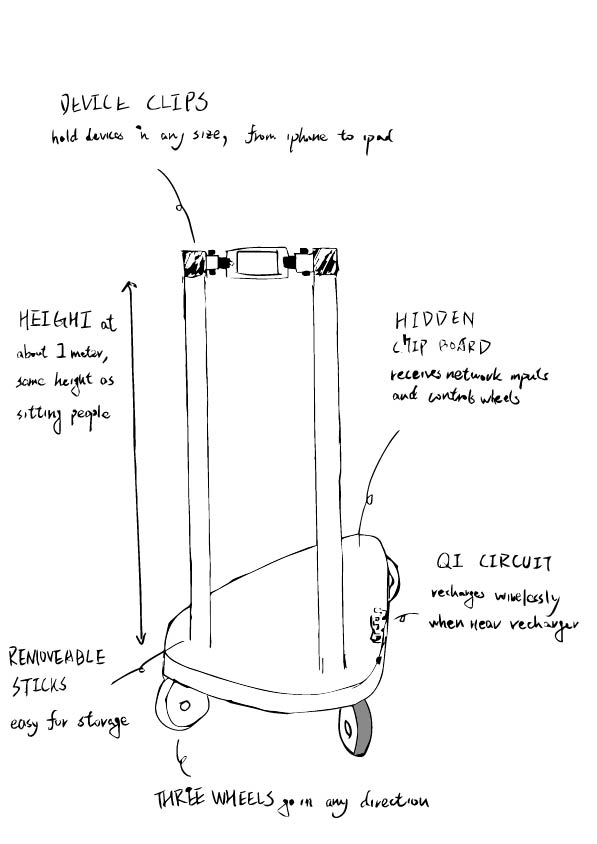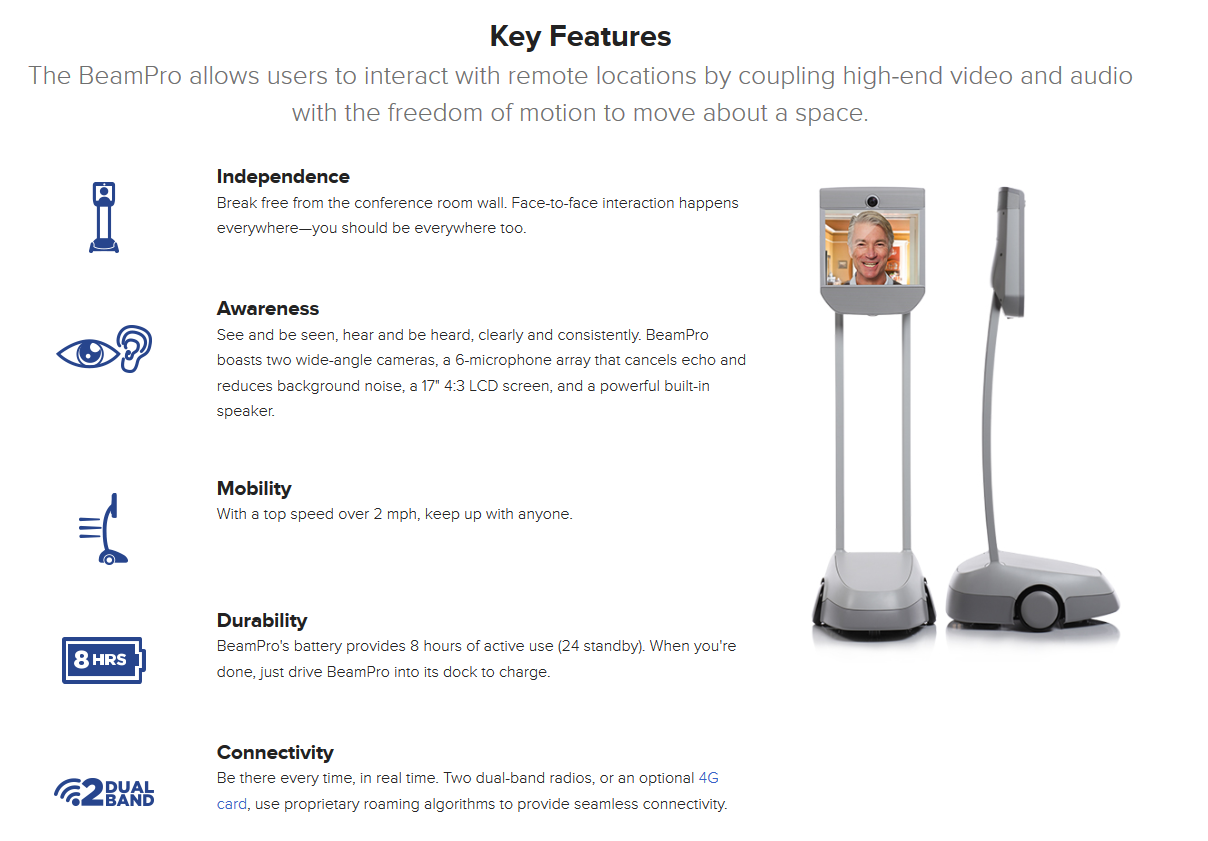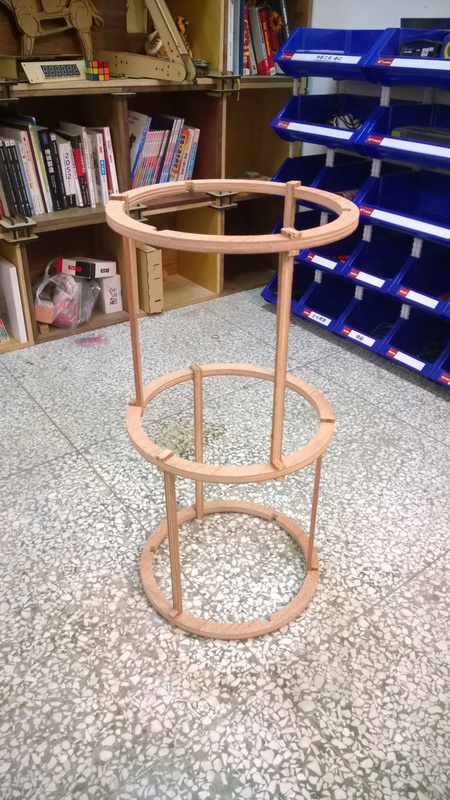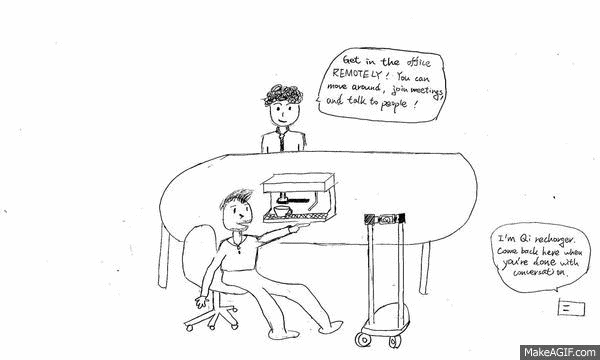- Logged in as: fablabtaipei (fablabtaipei)
- Recent changes
- Media Manager
- Sitemap
- Admin
- User page
- Update Profile
- Logout
User Tools
- Logged in as: fablabtaipei (fablabtaipei)
- Admin
- User page
- Update Profile
- Logout
Site Tools
Table of Contents
Application and Implication
What
What is it for?
Adam (affordable distantly-attending machine) is a remote-controlled, three-wheeled robot able to be equipped with a mobile device for video calls. It is designed for people anywhere to get involved with the same space in scenarios like conferences, factories, and fab labs.

What is done before?
BeamPro is a similar product for Enterprises. The company that I am working for also has several of it . BeamPro has a screen, camera and microphone, two wheels and a dock for charge. Adam is partially inspired by BeamPro but an economic solution.
 (Please do not copy or spread this image for any purpose; here I claim fair use for education only.)
(Please do not copy or spread this image for any purpose; here I claim fair use for education only.)
What makes it different?
Adam excels in ways compared to BeamPro:
- Affordable: BeamPro costs $1,950, which is unreachable for personals and small companies. Materials of Adam will cost less than $100.
- Eco-friendly: Nowadays many phones are obsolete when they still work fine and capable of video calls. Adam gives them a new birth without extra costs.
- Composable and Light: Adam can be discomposed into pieces in a box around 100 cm x 40cm x 10cm, weight less than 1 kg (excluding mobile devices.)
Of course some it sacrifices:
- Need a person at the location to turn on the camera.
- Need to turn on and recharge mobile devices.
What is it made of?
 Adam is mainly structured with wood. PLA and metal springs are used for attaching mobile devices.
Adam is mainly structured with wood. PLA and metal springs are used for attaching mobile devices.
Optionally I will design an outfit made of plastic composites. This does not increase its functionality but its charm. ;)
Extra feature: I would like to use wireless recharge circuit so that Adam can recharge itself when close to the dock.
How does it work
There are chips that controls three servo motors and a wifi-module that receives commands from remote users. Remote users will use a web-based application to control Adam to move around. Video call will be processed through another application, depending on your choices, and it is not included in this project.
Three steps to make Adam ready:
- The remote user made a video call to a mobile device at the same location as Adam.
- The local person accepts the call and attaches a mobile device to Adam.
- The remote user open the application for remote control.
Now you can talk and walk as if you were there!
How to make it
This projects will use skills from lectures almost every week. CNC for the structure, 3D printing for the device clip, input/output, networking, and interfaces for robot control, and composites for the outfit.
how will it be evaluated?
A remote guru will control the robot to move around in Fab Lab Taipei. If he or she can find where the toilet is, I'll call it a successful project.
